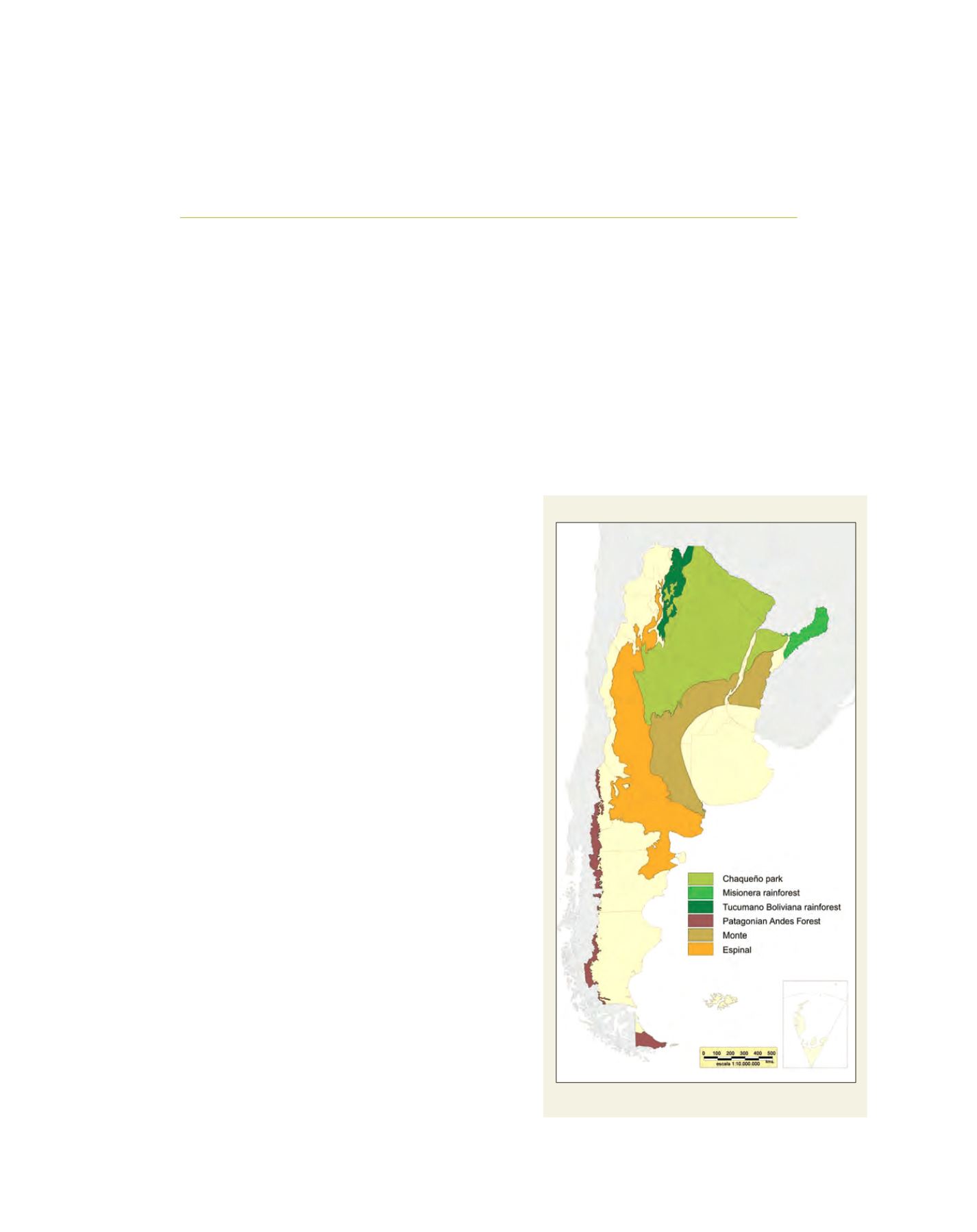

[
] 171
Forest management and
sustainable development in Argentina
Mirta Rosa Larrieu, Director, Forestry Production Department,
Ministry of Agriculture, Livestock and Fisheries, Argentina
T
he Argentine Republic covers an area of over 3.7 million
square kilometres (including the Antarctic sector), with a
population of over 40 million and a density of 15 people
per square kilometre.
Argentina has about 33 million ha of native forests and an addi-
tional 1.1 million ha of planted forests, covering a broad spectrum
of ecosystems including humid, sub-tropical temperate, semi-arid,
and arid forest types.
Eight to 20 million ha of land is available for afforestation,
of which five million has no competition with alternative agri-
cultural use, and can be complemented with other productive
activities.
A variety of factors – such as the wide variety of climates, soils and
species, an attractive legal framework for investment, low produc-
tion costs, high growth rates and lower rotations, skilled labour and
service companies for the activities of forest plantation management
– offer special comparative advantages for the implementation of
cultivated forests.
The country’s forests have seen a paradigm shift from timber
production to multiple use options, in response to various social
demands. The Government of Argentina intends to position the
country as a leader in the forest industry, being economically
competitive, socially responsible, environmentally sustainable,
socially equitable and integrated into different regions of the country
and the world, aimed at high value-added markets.
The main strategic areas of focus for Argentina are: expand-
ing the area of sustainable production; increasing productivity
in both the quantity and quality of raw materials; promotion and
development of investment in the forest industry chain; quality
job creation; increased added-value production and industrial
forest products; development of domestic demand; increase in
exports of all products tending to add value; institutional devel-
opment, both in the public and private sector; the development
of multiple socio-economic benefits of forests (environmental
services, energy forests basins); the training of human resources
development and technological innovation throughout the indus-
try; the integration of forestry with other agriculture activities;
and ensuring the realization of good business practices through-
out the production chain.
Regulatory framework
Plantations
– The area of planted forests, mainly concentrated in the
regions of Mesopotamia, Pampas, Cuyo, Northwest and Patagonian
Andes, has been the result of a national policy of incentives for
afforestation. Currently in force are the National Law
No. 25,080 extended by Law No. 26,432 Investment
in Forestry.
Conceived with the aim of increasing forested areas,
improving the efficiency of industrial forestry projects
and encouraging the establishment of new industries,
Argentina’s forest regions
There are 33 million hectares of native forest in Argentina
Source: SAyDS
















